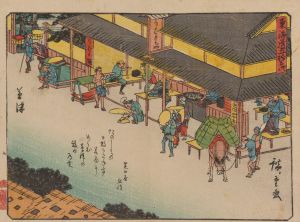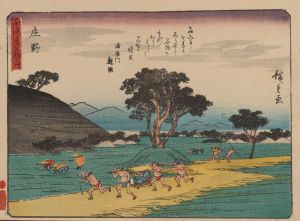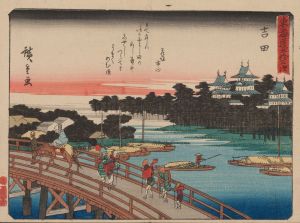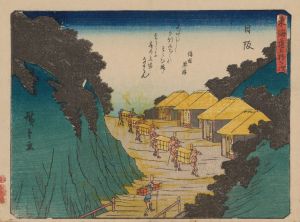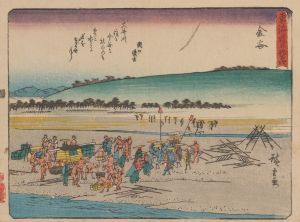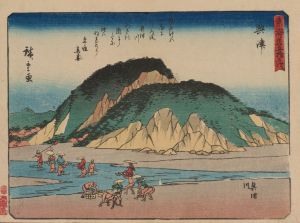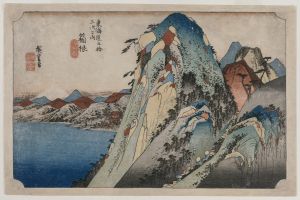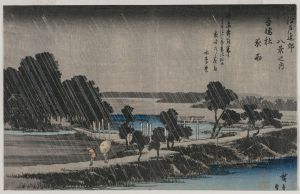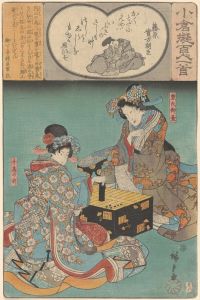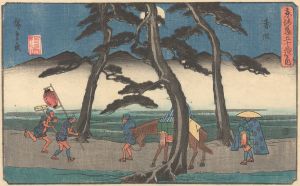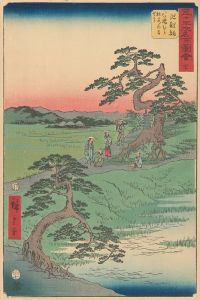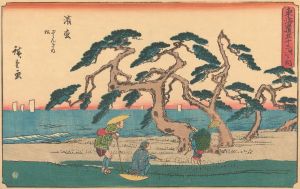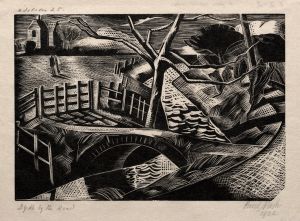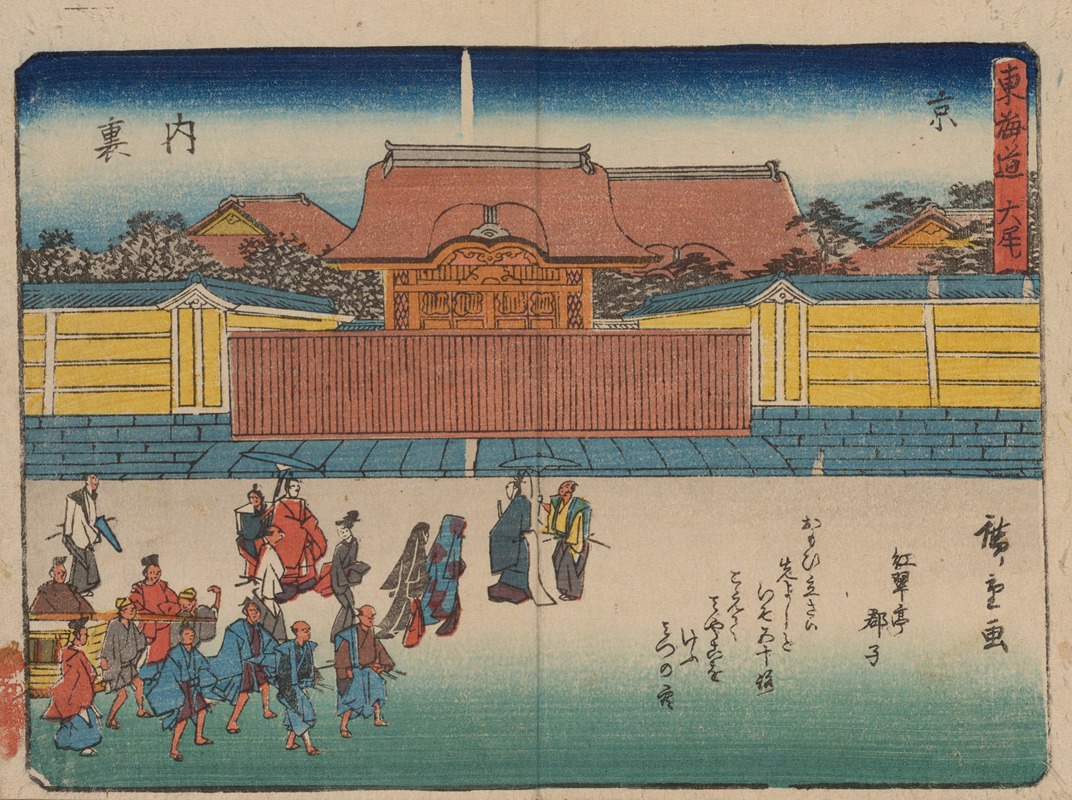
Tokaido gojusantsugi, Pl.56
A hand-painted replica of Andō Hiroshige’s masterpiece Tokaido gojusantsugi, Pl.56, meticulously crafted by professional artists to capture the true essence of the original. Each piece is created with museum-quality canvas and rare mineral pigments, carefully painted by experienced artists with delicate brushstrokes and rich, layered colors to perfectly recreate the texture of the original artwork. Unlike machine-printed reproductions, this hand-painted version brings the painting to life, infused with the artist’s emotions and skill in every stroke. Whether for personal collection or home decoration, it instantly elevates the artistic atmosphere of any space.
Andō Hiroshige, a renowned Japanese ukiyo-e artist of the Edo period, is celebrated for his masterful landscape prints and depictions of everyday life in Japan. One of his most famous series is "The Fifty-three Stations of the Tōkaidō" (Tōkaidō Gojūsan-tsugi), which captures the scenic beauty and cultural significance of the Tōkaidō road, a vital travel route connecting Edo (modern-day Tokyo) to Kyoto. This series, created between 1833 and 1834, consists of 55 prints, including the starting point at Nihonbashi in Edo and the terminus at the Sanjō Bridge in Kyoto, along with the 53 stations in between.
Plate 56 of this series, often referred to as "Tokaido gojusantsugi, Pl.56," is not a part of the original 53 stations but rather an additional print that complements the series. This print is known as "Kyoto" or "The Arrival at Kyoto," depicting the final destination of the journey along the Tōkaidō road. Hiroshige's portrayal of Kyoto captures the essence of the city as a cultural and historical hub, emphasizing its significance as the endpoint of the journey.
Hiroshige's work is characterized by its attention to detail, vibrant colors, and ability to convey the atmosphere of the locations he depicted. In "Kyoto," he presents a scene that reflects the bustling activity and architectural beauty of the city. The print typically features travelers arriving in Kyoto, with the city's iconic landmarks, such as temples and traditional buildings, visible in the background. The composition often includes elements that highlight the cultural richness of Kyoto, such as people in traditional attire and the natural beauty of the surrounding landscape.
The Tōkaidō series, including the Kyoto print, played a significant role in popularizing the Tōkaidō road and its stations. It provided viewers with a visual journey through Japan's diverse landscapes and cultural sites, offering a glimpse into the life and travel experiences of the Edo period. Hiroshige's ability to capture the spirit of each location contributed to the series' enduring popularity and influence on both Japanese and Western art.
Hiroshige's work, including the Tōkaidō series, had a profound impact on the development of landscape art. His innovative compositions and use of perspective influenced many artists, both in Japan and abroad. The series is often credited with inspiring the Impressionist movement in Europe, as artists such as Vincent van Gogh and Claude Monet admired Hiroshige's ability to capture the transient beauty of nature and everyday life.
In summary, "Tokaido gojusantsugi, Pl.56" by Andō Hiroshige is a significant work within the "Fifty-three Stations of the Tōkaidō" series, depicting the arrival at Kyoto. It exemplifies Hiroshige's skill in portraying the cultural and natural beauty of Japan, contributing to the series' lasting legacy in the art world.





